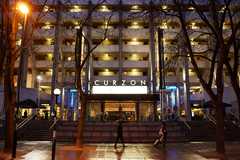Curzon / London
Now showing
Are all remakes bad news? Not when you are the world’s smartest cinema operator. Monocle surveys a vast upgrade from ragged art-house authenticity to the gleaming celebration of cinema that is now the Curzon Bloomsbury.
It’s a tricky thing, refurbing a relic. Bloomsbury’s Renoir cinema was such a place: one of international art-house cinema’s key houses of worship. A place of pilgrimage since 1972 for Tarkovsky-fanciers, Fellini-spotters and Eisenstein-aficionados. A Salisbury Cathedral, if not a Canterbury, for European sturm and Russian drang. A reliquary of forgotten afternoons in front of memorable movies. A place in which popcorn was sniffed at (too commercial) but Rothkos of damp were appreciated as penance, as part of the hajj to what this subterranean cinema actually was: a sunken Battleship Potemkin. But sometimes there’s just no telling people. There’s just no telling people that the Renoir, especially at the end, wasn’t that nice.
“Listen,” says Philip Knatchbull, boss of the Curzon film group that ran, run and have done up the Renoir, rechristening it Curzon Bloomsbury in the process. “I love art-house films and I couldn’t stand going to the Renoir. It was horrible; it was disgusting.” Oh God, really? “But there’s nothing inconsistent with changing the environment and enjoying independent movies.” Phew. Because there will be fans of the Renoir who will baulk at the name change as much as the fact that you can no longer see your own breath when the house lights come up. For everyone else, happily, that is history.
Now that the masochist sentimentalists have stopped reading we can get on and celebrate the very beautiful and capable new Curzon Bloomsbury (its old name; it was only made the Renoir in 1986). Knatchbull is leading the charge, rangy and keen in his smart hooded mac and modish suede brothel-creepers. Down the centrepiece marbled pink concrete staircase we go – “This is all new” – past a gold bar and sleek concrete walls minimally decorated with film stills (black and white; what, are you nuts?). Then we pad softly onward and downward past brass signage of a font that suggests Fritz Lang’s Metropolis – and no expense spared – and past the loos (“We’ll save those for later!”). On we go, down past gold doors (each of the four screens gets a very subtle Ali Baba entrance) and through “The Canyon”. That’s Knatchbull’s nickname for the tall, handsome, curving corridor that tempts you from the second subterranean floor’s gold foyer bar to “a sort of secret lounge; your reward at the end of your journey, in a way”, says Knatchbull. He’s referring to the seats, bar and screens that furnish the documentary screen’s very own sitting room. It’s also the furthest-away point from the cinema’s almost iconic, extant captain’s bridge of a box office – now a bar (done in gold). Jellyfish lights float in the high ceiling. Through the door rolls thunder. Knatchbull grins.
They’ve called the main auditorium in this six-screen cinema the “Renoir” and taken the sign from the old box-office to hang it behind the back row, where dust dances in the arc light of the projector. That thunder: it’s a Dolby Atmos test and all our teeth are falling out with the mightiness and rush and blast of it.
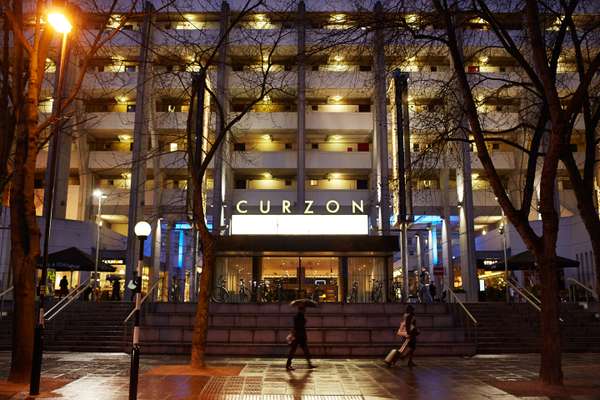
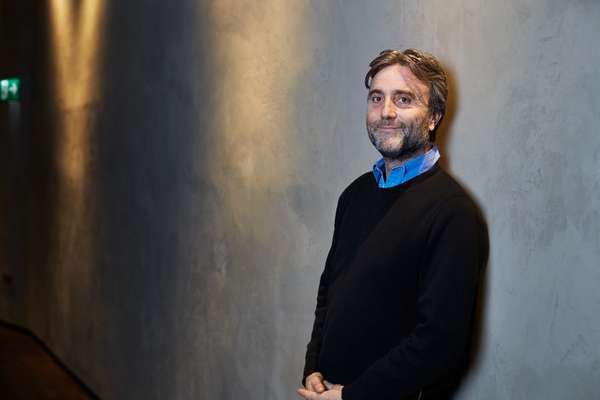
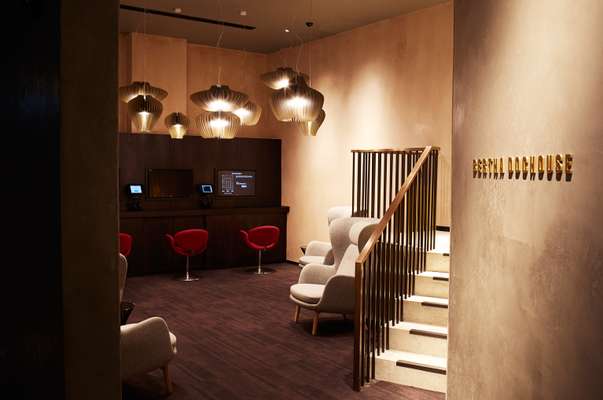

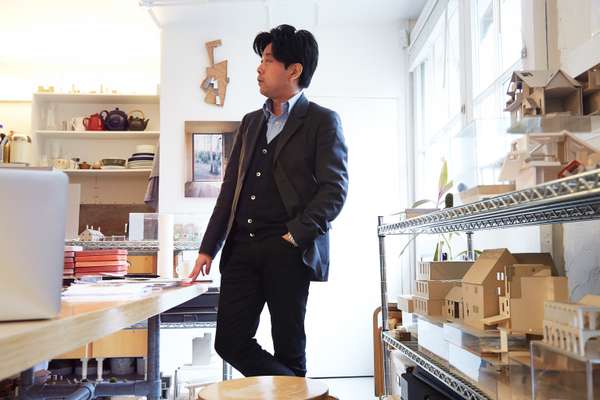

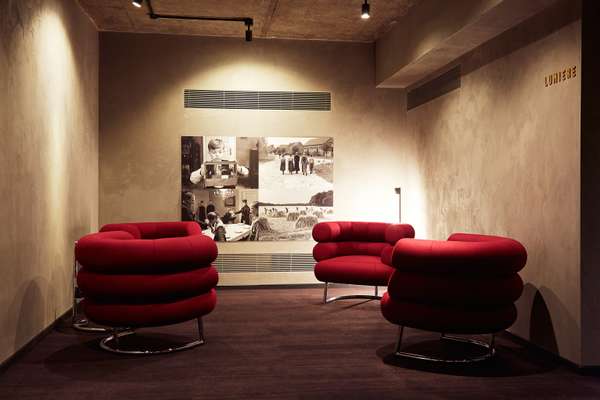
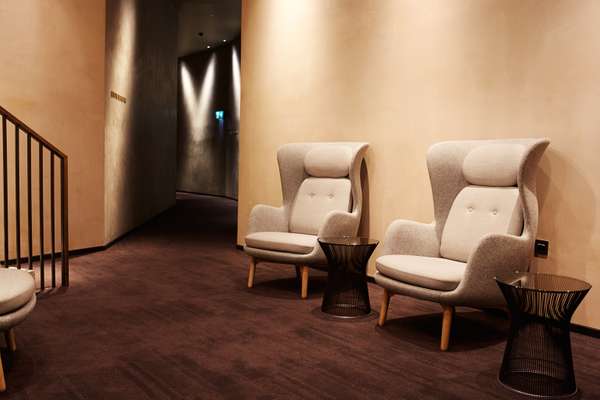
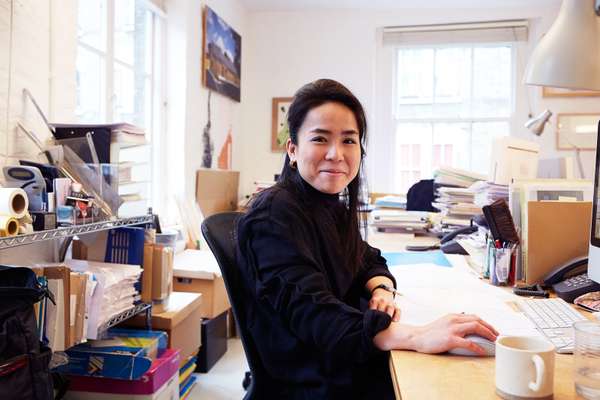
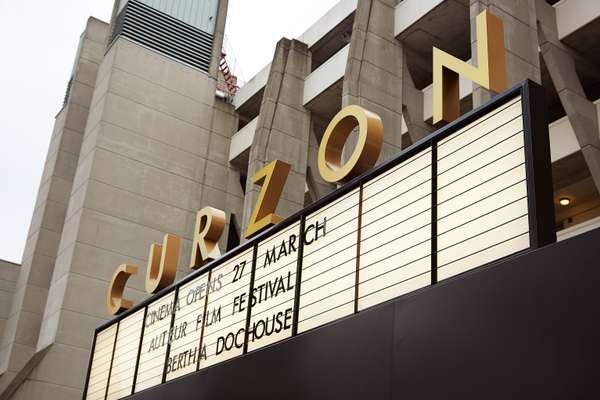
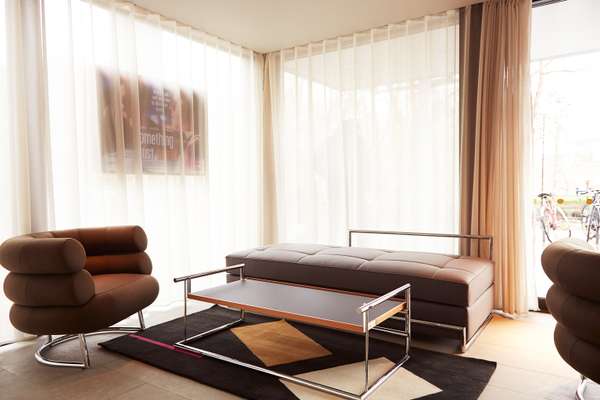

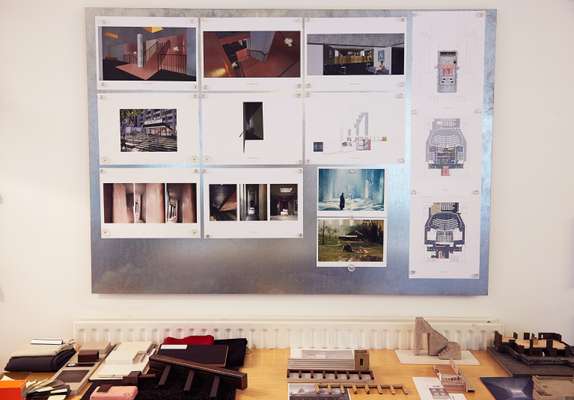
Technicians wear ear-defenders, illuminated by laptop glow and intent on graphs of decibels and frequencies. It’s time to get out and ask Knatchbull what this building means to the brand of Curzon and to meet the brave and imaginative architect Takero Shimazaki, who dreamt and drew it all up. Not before quizzing the tech guy about his favourite film while no one’s looking. “I normally like to use The Hobbit,” he says with a quick glance at the back of the departing boss of this art-house behemoth. “I mean, it’s great for testing the dynamics.”
Out of the firing range of Dolby in the dark we retreat to the succour of a brace of Eileen Gray’s Bibendum chairs – design classics set in a place eager to be judged alongside them. Knatchbull and Shimazaki get on well. They’re “Philip” and “Tak” to each other and must have been a formidable force pitted against the landlords on occasion, as well as for and against the financiers and convincing the local council, Camden.
“Immediately we started to talk in the language of film,” says Shimazaki of his pitching process. “I was showing stills from Tarkovsky films, telling them this was how I wanted the walls done. But I could see I scared them a bit so I showed a slide of Peter Zumthor’s spa in Switzerland to get things back on track.” Knatchbull laughs but is something of a roughly handsome concrete pillar himself. “I was really taken by Tak’s knowledge of film and of the Renoir and the associations he made and his ability to be commercially responsible,” he says. “When you hear Tak on Tarkovsky, a director so associated with our company, you just know you’re on the same wavelength.”
All very nice but how does that work for a cinema in a murderous marketplace in a city not without competition? “This is first and foremost a commercial building,” says Knatchbull. “We’re not a public-subsidy arts organisation but we believe that a commercially driven company has an opportunity to offer customers something they don’t already have for which they’ll pay to enjoy and be involved with.” This is Curzon’s brand: from Sheffield to Canterbury to Soho to a new, more commercially designed multi-screener in London’s Victoria to this, Knatchbull’s daring new “heartbeat of the company” in Bloomsbury. These cinemas are smart and purposeful and possessed of a nobility rare (or non-existent) in a universe of gormless multiplexes.
And what of Curzon itself? It is a little misunderstood. “People confuse us,” says Knatchbull. “They think we’re a cinema company when we’re a content-led company; the cinemas are a means to an end rather than an end in themselves.” He takes off his coat. “In other words, you show films in the cinema in a certain way and the attention derived from showing those films creates downstream value to other sales channels such as dvd, television, Curzon Home Cinema [its video-on-demand service], Netflix. You create value by the perception that they are great films.” He waves at the expensive chairs, the chic concrete walls, the lights, dimmed just so. “These are part of the customer experience around our content; the value of the cinema itself is an intangible.”
It is a lesson. Curzon’s cinemas – even this flagship – are, if not quite the tip of the iceberg, something like the icing on a cake made of acquired film rights and landed distribution deals. “The nice thing,” says Knatchbull, “is when you bump into Viggo Mortensen at a film festival somewhere and he says, ‘Oh, you’re involved with Curzon? I love Curzon!’ That’s tremendously important.”
Shimazaki, dapper in his trilby, allowing his client the airtime, is philosophical, “A film should be about losing yourself from the everyday, about cheating time in some way. In this old building, which is now in a shopping centre in Bloomsbury, you buy a ticket and you go underground to sit in your seat and have an intense cinematic experience; this is what I wanted to explore.” This cinema is theirs and as beautifully rendered in its architecture, lighting, height, width, depth, materials rough and smooth, soft and solid, cleverness, sobriety, sense of solidity over luxury, timelessness and raw and contemporary grandeur as a place can be. If ever it were a place of worship, it would be Zen.
What’s the point in making a cinema like this? “We don’t want to be elitist; we want to be inclusive,” says Knatchbull. “But we also want to present our customers with something that’s just about the limit of what they’re willing to take a risk with.” Remind you of anything? The loos! They are brilliant white, piercing-sun-bed-supernova white. From the cubicles streams sexy pink light. The idea is from Peter Greenaway’s The Cook, the Thief, His Wife and Her Lover, a confusing, political, quite pornographic film and, as lavatories go, about the limit of what most customers would be willing to take a risk with. Welcome back.

